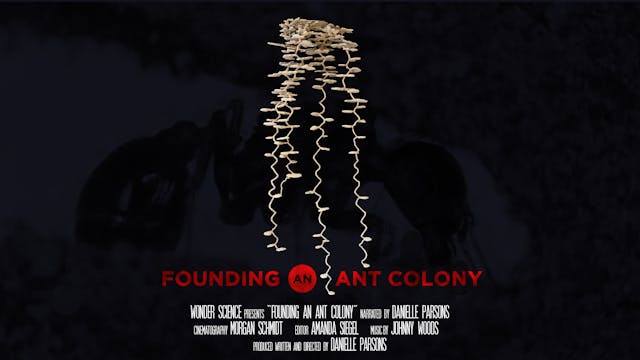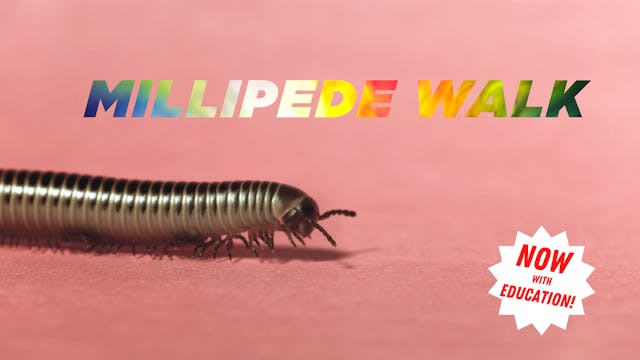Rotifer | Narrated
Living Beings
•
25m

Meet a tiny 1000-celled animal living among single-cell organisms. Rotifers are weird and wonderful, like aliens on earth! Rotifers are among Earth's smallest animals, tied with Tardigrades. Despite their tiny size, these multicellular creatures display a surprising complexity that is both fascinating and beautiful. In this video, award-winning video microscopy by Tom Jones captures a spectacular Stephanoceros rotifer, which, although a giant among rotifers, is barely visible to the unaided eye. Have you ever spent 25 minutes observing a single microscopic creature? It's very rewarding. The accompanying music, edited from an original live score by Tomer Baruch, sets the tone for scientific exploration. You’ll learn about these fascinating creatures from narration by Danielle Parsons during the first 5.5 minutes, then you're invited to simply enjoy the music and the mesmerizing activity of this microscopic animal.
Rotifers, or "wheel animalcules," were first described in 1687 by the "Father of microbiology," Antonie van Leeuwenhoek. These tiny creatures range from 40 microns to over 2,000 microns, making many smaller than the larger protozoa. This Stephanoceros fibriatus is one of the largest rotifer species, growing up to 2mm in length. They thrive in a variety of environments, from ponds and streams to mossy forests and icy arctic terrains. Rotifers exhibit an astonishing variety of sizes, shapes, and types, each with unique characteristics that make them a joy to study.
These tiny organisms boast a complex musculature, as well as a basic nervous system. The Stephanoceros species are equipped with adhesive glands on their "toes," allowing them to anchor onto substrates.
The name "rotifer" comes from the appearance of some species, which seem to have two lobes that resemble tiny wheels due to a crown of cilia. These cilia help them move and feed, adding to the diversity of their forms.
Rotifers are also known for their unique reproductive strategies. In many species, males are either unknown or significantly smaller than females, with a very short lifespan. Bdelloid rotifers reproduce exclusively through parthenogenesis, meaning all offspring are female. Some species produce different types of eggs, including "winter" eggs that can survive extreme environmental conditions, such as drying, freezing, or intense heat.
The internal structure of rotifers is equally fascinating, with a complex musculature, a primitive nervous system, and specialized organs like the mastax—a bulb-like structure with a set of jaws used for grinding food. The trophi, the jaw apparatus within the mastax, varies greatly among species and is key to their identification.
Rotifers are a testament to the wonder of biology, revealing the intricacy of life at even the smallest scales. Their ability to thrive in diverse environments, in soil and water, their unique reproductive strategies, and their transparent anatomy make rotifers a subject of endless fascination for scientists and nature enthusiasts alike.
We bring you closer to these tiny animals, showcasing their beauty and complexity through stunning video microscopy. Join us on this journey into the micro-world and discover the wonders of rotifers—earth's smallest animals.
Up Next in Living Beings
-
Pretend You're a Leaf
Swirling green energy factories capture the energy of sunlight, thus enabling life on earth. Cytoplasmic streaming inside plant cells is very efficient -- the slow turning of each round chloroplast means every square micron gets a chance to create energy and oxygen from sunlight. Here, we're able...
-
Founding an Ant Colony | Narrated
Only a few will be Queen. Discover what it takes to start a new ant colony in this rare visit inside a founding queen's underground brood chamber.
-
Millipede Walk | narrated
Millipedes have the most legs of any animal. The distinctive traveling wave in its walk is a kind of auto-pilot. Using innovative slow-motion macro video, we observe the traveling wave motion of the legs move from the back to the front of the animal's long body. The workings of the walk involve a...



